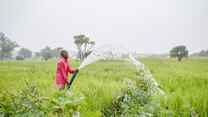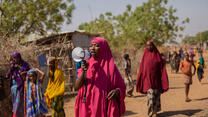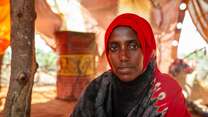Introduction
An unprecedented humanitarian crisis, and a changing landscape. The global community is facing extraordinary shifts in forced displacement. Today, more people than ever before—65 million, including 21 million refugees—are displaced by conflict.[1] The average length of their displacement is 10 years, and some 60 percent now live in urban areas rather than camp settings.[2] A staggering 86 percent of refugees are living in developing countries that already struggle to meet the needs of their populations.[3] Because of their proximity to conflict, just seven countries host half of the world’s refugees, placing great strain on their economies and societies.[4] For example, as of December 2015, the economic cost to Jordan to host and assist refugees was roughly $2 billion, and one in four people in Lebanon was a refugee. [5] Furthermore, the political and economic dynamics in many of these host countries have the potential to threaten regional stability.
Current tools and responses fail to match the scale and complexity of the challenge. The needs of refugees and host countries have changed tremendously alongside these trends. Protracted displacement requires access to education, healthcare, and economic recovery opportunities. Urban displacement presents new challenges for both reaching refugees with services and addressing dynamics with host communities. The humanitarian sector’s tools and financing, which often focus on basic needs and shortterm funding, are too limited in scope and scale, and often not “fit for purpose”—a significant proportion of funding is allocated to food and nonfood assistance, when the longterm displaced and urban refugees need access to livelihoods, routine social services, and other opportunities to achieve selfreliance. For example, education receives less than two percent of humanitarian aid.[6] A sustainable response requires interventions integrated into national systems that allow refugees not only to survive, but to recover and rebuild their lives.



